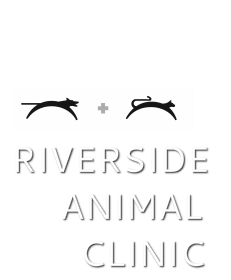Dentistry
While most people are aware of the need for human dental care, many pet owners do not realize that their pets are subject to the same dental concerns. It is extremely important to care for your pet’s teeth for the same reasons it’s important to care for our own teeth - ignoring this aspect of your pet’s health can have life threatening consequences.
The most common disease in companion animals is periodontal (gum) disease, affecting at least 70% of dogs and cats over 5 years of age. However, cats and smaller dogs can be affected sooner, as genetically, they are more prone to an increased risk of this disease.
As periodontal disease advances, it results in weakening of the structures that support the teeth, leading to the loosening and eventual loss of teeth. During this process, the animal is fighting constant infection. As the animal chews, the infected and inflamed gums bleed, allowing bacteria to enter the blood stream.
Periodontal disease is associated with kidney, liver and heart-valve infections, as well as fibrosis of the lungs and arthritis. The disease often advances undetected, hidden from view below the gum line. The only way to accurately assess and treat periodontal disease is by anesthetizing the patient to allow for a thorough and detailed examination, digital X rays, and professional dental scaling above and below the gum line,followed by dental polishing.
Although many pet owners are concerned about placing an animal under anesthesia, and it is never 100% risk-free, current anesthetic and patient-evaluation techniques used in professional veterinary practices minimize risks. The most critical dental-scaling location is on tooth surfaces between the gums and the root, where periodontal disease is active. Without anesthesia, the procedure creates unnecessary pain and health risks, and the procedure becomes, at best, cosmetic.
Brushing your pet’s teeth regularly can help prevent or delay dental disease by removing plaque along the gum line, but it cannot treat disease. Thus, MHS recommends starting a preventative home care program as soon as you bring a new pet home. As a first step, accustom your pet to the handling of her teeth and gums. Once she is relaxed, use a toothbrush or gauze, as well as toothpaste created specifically for pets.Do not use human toothpaste.
Signs of advancing dental disease can include odor, loose or missing teeth, or trouble chewing food. Keep in mind, however, that your pet might have advanced dental disease without showing any signs of discomfort, though she might be experiencing tremendous pain and emotional stress.
A routine dental exam by your pet’s veterinarian, along with regular X-rays, and scaling and polishing under anesthesia, is strongly advised to help keep your pet happy and healthy for years to come.
The most common disease in companion animals is periodontal (gum) disease, affecting at least 70% of dogs and cats over 5 years of age. However, cats and smaller dogs can be affected sooner, as genetically, they are more prone to an increased risk of this disease.
As periodontal disease advances, it results in weakening of the structures that support the teeth, leading to the loosening and eventual loss of teeth. During this process, the animal is fighting constant infection. As the animal chews, the infected and inflamed gums bleed, allowing bacteria to enter the blood stream.
Periodontal disease is associated with kidney, liver and heart-valve infections, as well as fibrosis of the lungs and arthritis. The disease often advances undetected, hidden from view below the gum line. The only way to accurately assess and treat periodontal disease is by anesthetizing the patient to allow for a thorough and detailed examination, digital X rays, and professional dental scaling above and below the gum line,followed by dental polishing.
Although many pet owners are concerned about placing an animal under anesthesia, and it is never 100% risk-free, current anesthetic and patient-evaluation techniques used in professional veterinary practices minimize risks. The most critical dental-scaling location is on tooth surfaces between the gums and the root, where periodontal disease is active. Without anesthesia, the procedure creates unnecessary pain and health risks, and the procedure becomes, at best, cosmetic.
Brushing your pet’s teeth regularly can help prevent or delay dental disease by removing plaque along the gum line, but it cannot treat disease. Thus, MHS recommends starting a preventative home care program as soon as you bring a new pet home. As a first step, accustom your pet to the handling of her teeth and gums. Once she is relaxed, use a toothbrush or gauze, as well as toothpaste created specifically for pets.Do not use human toothpaste.
Signs of advancing dental disease can include odor, loose or missing teeth, or trouble chewing food. Keep in mind, however, that your pet might have advanced dental disease without showing any signs of discomfort, though she might be experiencing tremendous pain and emotional stress.
A routine dental exam by your pet’s veterinarian, along with regular X-rays, and scaling and polishing under anesthesia, is strongly advised to help keep your pet happy and healthy for years to come.
The above information is provided by the Michigan Humane Society
Monday-Friday 9:00 a.m.- 5:00 p.m. Saturday 9:00 a.m.- 12:00 p.m.
1855 Midland Road Saginaw, MI 48638
(989)799-6490
1855 Midland Road Saginaw, MI 48638
(989)799-6490
